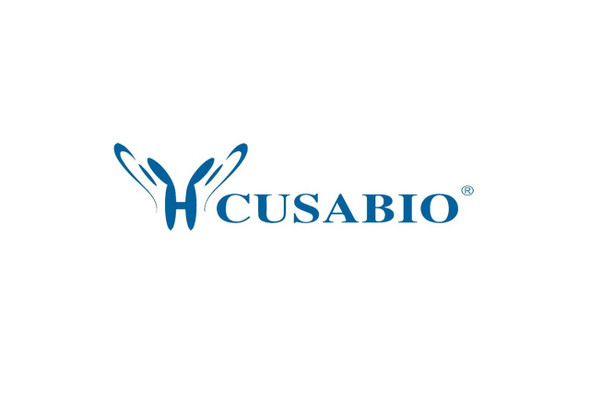Cusabio Rattus norvegicus Recombinants
Recombinant Rat Cytochrome P450 1B1 (Cyp1b1) | CSB-YP731067RA
- SKU:
- CSB-YP731067RA
- Availability:
- 25 - 35 Working Days
Description
Recombinant Rat Cytochrome P450 1B1 (Cyp1b1) | CSB-YP731067RA | Cusabio
Alternative Name(s): CYPIB1 (Cytochrome P450RAP)
Gene Names: Cyp1b1
Research Areas: Cardiovascular
Organism: Rattus norvegicus (Rat)
AA Sequence: MATSLSADSPQQLSSLSTQQTILLLLVSVLAIVHLGQWLLRQWRRKPWSSPPGPFPWPLIGNAASVGRASHLYFARLARRYGDVFQIRLGSCPVVVLNGESAIHQALVQQGGVFADRPPFASFRVVSGGRSLAFGHYSERWKERRRAAYGTMRAFSTRHPRSRGLLEGHALGEARELVAVLVRRCAGGACLDPTQPIIVAVANVMSAVCFGCRYNHDDAEFLELLSHNEEFGRTVGAGSLVDVMPWLQLFPNPVRTIFREFEQINRNFSNFVLDKFLRHRESLVPGAAPRDMMDAFILSAEKKATGDPGDSPSGLDLEDVPATITDIFGASQDTLSTALLWLLILFTRYPDVQARVQAELDQVVGRDRLPCMSDQPNLPYVMAFLYESMRFTSFLPVTLPHATTANTFVLGYYIPKNTVVFVNQWSVNHDPAKWSNPEDFDPARFLDKDGFINKALASSVMIFSVGKRRCIGEELSKTLLFLFISILAHQCNFKANQNEPSNMSFSYGLSIKPKSFKIHVSLRESMKLLDSAVEKLQAEEACQ
Source: Yeast
Tag Info: N-terminal 6xHis-tagged
Expression Region: 1-543aa
Sequence Info: Full Length
MW: 61.9 kDa
Purity: Greater than 85% as determined by SDS-PAGE.
Relevance: Cytochromes P450 are a group of heme-thiolate monooxygenases. In liver microsomes, this enzyme is involved in an NADPH-dependent electron transport pathway. It oxidizes a variety of structurally unrelated compounds, including steroids, fatty acids, retinoid and xenobiotics. Preferentially oxidizes 17beta-estradiol to the carcinogenic 4-hydroxy derivative, and a variety of procarcinogenic compounds to their activated forms, including polycyclic aromatic hydrocarbons. Promotes angiogenesis by removing cellular oxygenation products, thereby decreasing oxidative stress, release of antiangiogenic factor THBS2, then allowing endothelial cells migration, cell adhesion and capillary morphogenesis. These changes are concommitant with the endothelial nitric oxide synthase activity and nitric oxide synthesis. Plays an important role in the regulation of perivascular cell proliferation, migration, and survival through modulation of the intracellular oxidative state and NF-kappa-B expression and/or activity, during angiogenesis. Contributes to oxidative homeostasis and ultrastructural organization and function of trabecular meshwork tissue through modulation of POSTN expression.
Reference: "Specificity determinants of CYP1B1 estradiol hydroxylation." Nishida C.R., Everett S., Ortiz de Montellano P.R. Mol. Pharmacol. 84:451-458(2013)
Storage: The shelf life is related to many factors, storage state, buffer ingredients, storage temperature and the stability of the protein itself. Generally, the shelf life of liquid form is 6 months at -20?/-80?. The shelf life of lyophilized form is 12 months at -20?/-80?.
Notes: Repeated freezing and thawing is not recommended. Store working aliquots at 4? for up to one week.
Function:
Involvement in disease:
Subcellular Location:
Protein Families:
Tissue Specificity:
Paythway:
Form: Liquid or Lyophilized powder
Buffer: If the delivery form is liquid, the default storage buffer is Tris/PBS-based buffer, 5%-50% glycerol. If the delivery form is lyophilized powder, the buffer before lyophilization is Tris/PBS-based buffer, 6% Trehalose, pH 8.0.
Reconstitution: We recommend that this vial be briefly centrifuged prior to opening to bring the contents to the bottom. Please reconstitute protein in deionized sterile water to a concentration of 0.1-1.0 mg/mL.We recommend to add 5-50% of glycerol (final concentration) and aliquot for long-term storage at -20?/-80?. Our default final concentration of glycerol is 50%. Customers could use it as reference.
Uniprot ID: Q64678
HGNC Database Link: N/A
UniGene Database Link: N/A
KEGG Database Link: N/A
STRING Database Link: N/A
OMIM Database Link: N/A






